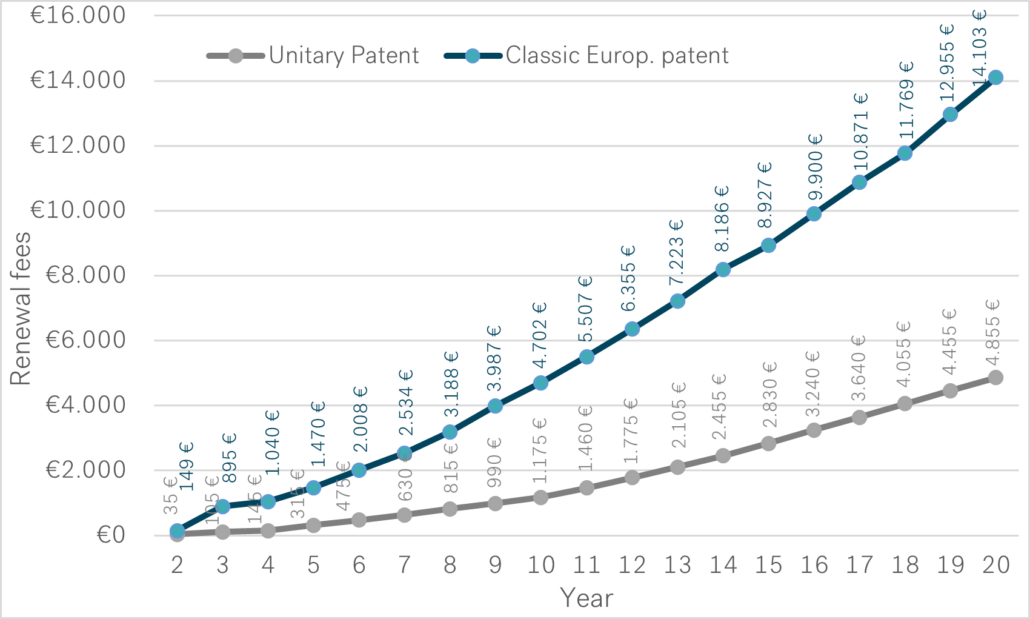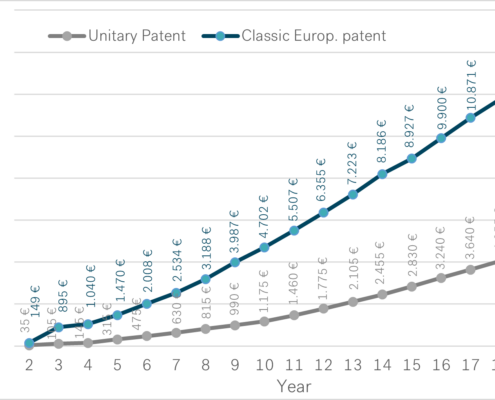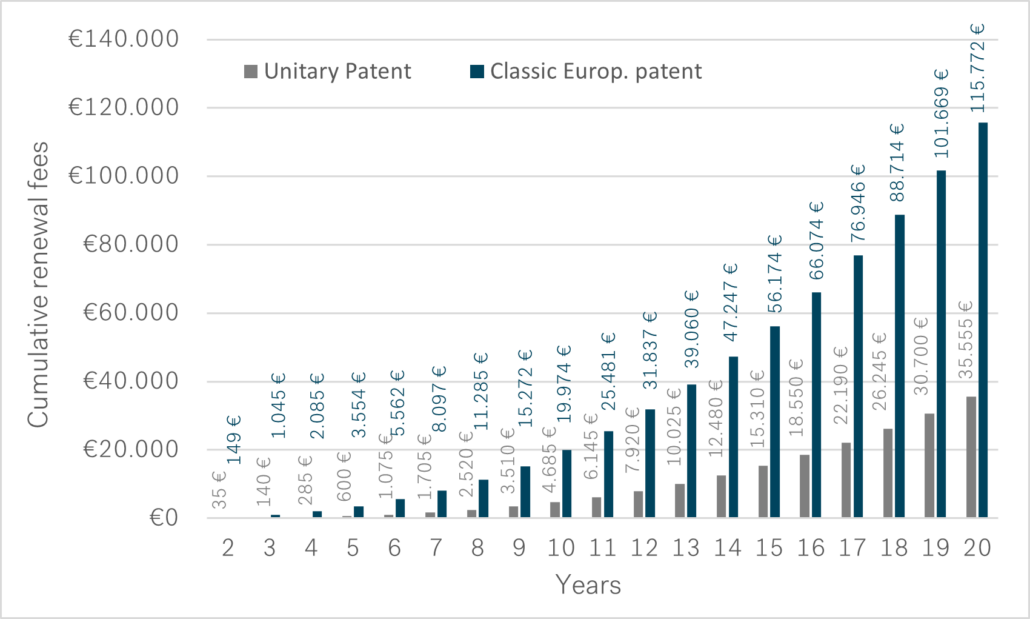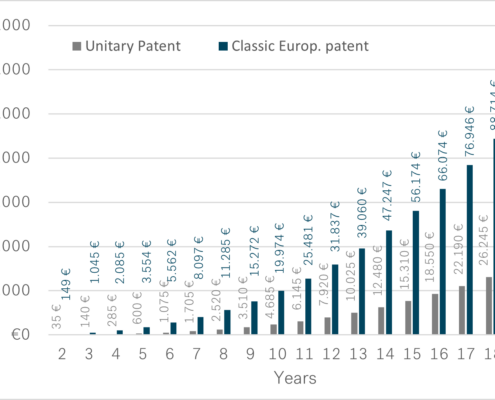Unitary Patent: costs
The costs of a Unitary Patent and a classic European patent are identical from filing to grant. However, depending on the number of desired countries in which the granted patent is to be maintained, the costs may differ substantially between a Unitary Patent and a bundle of corresponding validated national patents. So the question is, at what point is a Unitary Patent more favorable than a classic European patent?
Renewal fees
In the case of a national patent, it is necessary to pay renewal fees directly to the respective national patent offices, based on the customary national rules. These national renewal fees differ in their amount for the individual countries. In the case of a Unitary Patent, on the other hand, a single renewal fee must be paid to the European Patent Office, which is based on the sum of the annual fees for Germany, France, Great Britain and the Netherlands. If validation is planned in a further country, the annual fees of the Unitary Patent are accordingly more favorable.
The figures below illustrate comparatively the development of the isolated and cumulative renewal fees of a Unitary Patent with a classic European patent validated in all participating 17 UPC member states.
Further Costs
In the case of a classic European patent, additional costs for translations into national languages, publication fees and costs for local service providers, which depend on the number of countries in which validation is to take place, are incurred after grant in addition to the renewal fees. These costs are minimized with the Unitary Patent, since a separate validation in the participating member states is not necessary. In addition, under special conditions, there are further savings possibilities in the system in the form of compensation for translation costs and reduced annual fees when a special licensing statement is declared.
As a rule of thumb: the greater the number of countries in which validation of the European patent is sought, the more favorable a Unitary Patent is in comparison.
Author: Patrick Hirschle



